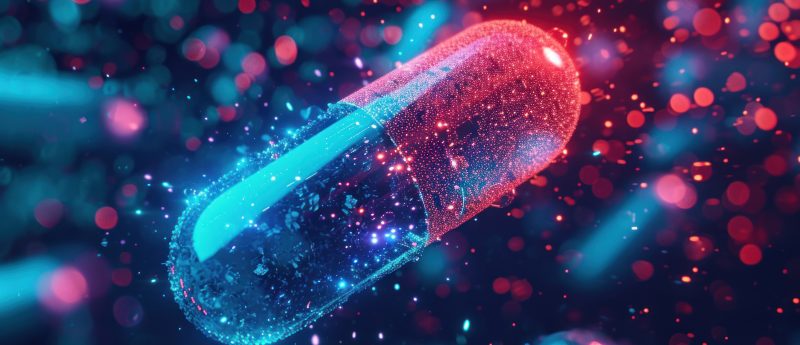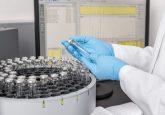Webinar Q&A transcription and follow-up: ‘Transforming sample preparation’

Thank you everyone who attended the live webinar: Transforming sample preparation. Below is a transcription of the Q&A session held during the webinar, as well as responses to the questions posed during the live event that we did not have time to answer. We hope this is a useful resource and thank our webinar attendees and our speaker, Xin Zhang (Waters Corporation), for their time.
1. How clean is the Oasis PRiME HLB compared to Oasis HLB?
Oasis PRiME HLB is our second generation of Oasis products. It is based on Oasis HLB, but creates much cleaner extracts compared to Oasis HLB. In terms of performance, Oasis PRiME HLB will yield similar recoveries and percentage RSDs compared with Oasis HLB, but it removes 90% more phospholipids and is therefore much cleaner.
2. How much time can I save if I process cartridges?
The 3 step protocol works especially well for people who use cartridges. This is because with cartridges you normally have to condition and equilibrate one cartridge at a time, so if you have 20 cartridges you do 20 conditions and 20 equilibrations. You can save 40% of time with Oasis PRiME HLB, because you start with loading and therefore eliminate the condition and equilibration steps. It will also save time for people who use multichannel pipettes, but cartridge users will benefit more from these simplified protocols.
3. What does the faster flow really mean? Can’t you actually go too fast and get erroneous results?
When we were developing this product, we collected a lot of customer feedback. Most currently available SPE devices have problems with columns clogging or the flow rate being too slow – especially now that customers are using different matrices. Very viscous samples can be hard to pass through, even with the highest vacuum. Based on this feedback, we designed a new sample preparation device so that the same matrices will flow faster with Oasis PRiME HLB. Oasis PRiME HLB can therefore be very helpful if you work with viscous samples.
I spent around 5 years working on the development of this product. I compared it with Oasis HLB during the testing stages, and on the same vacuum, the flow rates were higher but the performance was similar in terms of recovery. If you are concerned about it flowing too fast, you can decrease your vacuum a little bit to let it flow a bit slower. If you do want a faster flow device, then this is the device you need, as there are no others currently on the market.
4. Do you think phospholipids are a bigger problem in routine analysis than most people realise?
It seems a lot of customers do not think it is a big problem, which is why I spent a lot of time on it in this presentation, and gave an example where matrix effects were caused by phospholipids.
I personally think that phospholipids can be a big problem, especially as they can affect matrix effects. I recently met with some customers, who have started to believe that phospholipids really can be problematic based on the data I presented. They want to monitor the phospholipids in their routine analysis, which I think will be very helpful – especially for troubleshooting.
We have done a lot of experiments and found that if you do a faster flow separation, phospholipids can accumulate in your column and eventually elute out unpredictably – even in the case of isocratic elution.
If possible, I would strongly suggest that you at least monitor the phospholipids during your routine analysis. If you do need to troubleshoot down the line, you will then have a reference to check the phospholipids, and may find that they were the problem.
1. Why did you create this product?
We created it to simplify the process of sample preparation. We wanted to provide a way for scientists to use SPE with simple protocols that do not require extensive method development, and allow faster, more predictable processing times while providing the cleanest eluates possible.
2. When comparing Oasis HLB and Oasis PRiME HLB, what is the difference in terms of surface area, pore size and particle size?
Oasis PRiME HLB sample preparation products are based on Oasis HLB, but the official composition and design are currently patent pending.
3. What has changed from Oasis to PRiME to give these effects? How was the analysis made faster – are the particles bigger?
It is a complex characteristic that includes the sorbent, frits and manufacturing process.
4. Which is the moeity (polymer modification) that makes Oasis PRiME HLB better in comparison to Oasis HLB?
This is a patent pending technology.
5. Is there any data from where Oasis PRiME HLB was compared with Oasis HLB, rather than competitors? Did you compare matrix effects (phospholipids) after cleaning with Oasis PRiME HLB and Oasis HLB?
Yes – in terms of performance, recovery of both Oasis HLB and Oasis PRiME HLB are similar. Matrix effects observed with Oasis PRiME HLB are better than Oasis HLB.
6. Do you have Oasis PRiME HLB in cartridge form that can be used in line with HPLC?
Not yet – this is something we will explore at a later stage.
7. Can these be used for protein recovery e.g. in 96 well format?
We have not investigated this yet.
8. Are high phospholipids and matrix effects at competitor phases higher because of the elution solvent composition? Did you use ACN/MeOH 90:10 as well?
We used the same elution solution for all Oasis PRiME HLB and competitor SPE. However, we still saw high matrix effects with other elution protocols with the competitors’ sorbents.
9. Did you test Oasis PRiME HLB on urine samples, and if so, do you have some results, or comparison to the old Oasis HLB columns? Do you have any application notes?
We did some urine tests and the flows are faster than those observed with Oasis HLB. Other results are comparable to Oasis HLB and we are currently working on an application note on urine.
10. Did you use internal standards to analyze the steroids in plasma or cannabinois in whole blood in order to improve the reproducibility?
Yes
11. We are having trouble using SPE to get pyrazinoic acid from plasma. Would you suggest using a catch and release method or a pass through? We are observing that the behavior of the molecule changes when it is bound to plasma and subjected to ACN.
I would suggest using a 3 step catch and release method.
12. Would Oasis PRiME HLB work for small peptides?
Right now we are focusing on small molecules with Oasis PRiME HLB. We suggest you use mixed mode Oasis SPE with peptides. You can find more information about this on our website in the Oasis Sample Preparation Brochure.
13. Are cartridges reusable?
No.
14. Why do many customers use Oasis HLB with conditioning, although this step can be removed?
When it was launched back in 1996 we suggested customers use the 5 step protocol including the condition and equilibration steps. We have spent the last few years convincing ourselves that these steps can be removed without impacting the final analytical results. So, Oasis HLB can also be used without conditioning and equilibration steps. However, Oasis PRiME HLB also has the added benefits of faster flows and cleaner samples.
15. Do we need to precipitate plasma before loading?
Usually we just dilute 1:1 with 4% H3PO4, but it depends on your analytes of interest – if the analytes bond to the protein and cannot break by H3PO4 acid, you may need to do precipitation.





